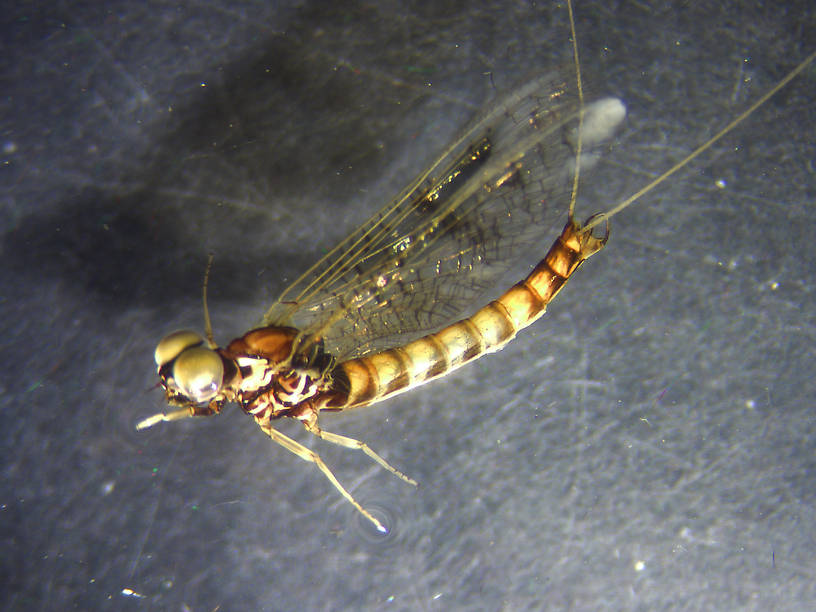
Hex Mayflies
Hexagenia limbata
The famous nocturnal Hex hatch of the Midwest (and a few other lucky locations) stirs to the surface mythically large brown trout that only touch streamers for the rest of the year.

Mayfly Species Ameletus subnotatus (Brown Duns)
Species Range
Physical description
Most physical descriptions on Troutnut are direct or slightly edited quotes from the original scientific sources describing or updating the species, although there may be errors in copying them to this website. Such descriptions aren't always definitive, because species often turn out to be more variable than the original describers observed. In some cases, only a single specimen was described! However, they are useful starting points.
Male Spinner
Wing length: 13 mm
A large speckled-winged species, in which the ventral abdominal markings consist of dark dashes from the base of each segment, and two dark dots.
Head and thorax blackish brown. Fore leg dark reddish black; a black apical band on the femur. Middle and hind legs somewhat lighter brown; the femora banded apically with dark brown, the tarsi darker than the tibiae, especially toward the tips. Wings hyaline; both wings clouded with dark brown close to the wing roots. Venation blackish brown, many cross veins margined with brown. Small brown spots below the bulla on the radius, at the inner ends of the intercalaries of the radial sector, at the division of its outer fork, and at the inner end of the intercalary of that vein. Stigmatic cross veins branched and anastomosed, forming a rather dense network.
Abdomen pale yellowish brown dorsally; the posterior margins, the median stripe and the postero-lateral angles dark brown. Ventrally paler than the dorsum; sternites 2-6 marked with dark submedian dashes and a dark dot near the center on each side of the median line. Sternite 9 yellowish brown, a dark triangle on each side in place of the submedian streaks; lateral margins blackish brown. Forceps base shaded with dark brown. Forceps lighter brown. Tails blackish brown at the base.
Specimens of the Mayfly Species Ameletus subnotatus
1 Male Spinner
Start a Discussion of Ameletus subnotatus
References
- Needham, James G., Jay R. Traver, and Yin-Chi Hsu. 1935. The Biology of Mayflies. Comstock Publishing Company, Inc.
Mayfly Species Ameletus subnotatus (Brown Duns)
Species Range
Common Name
Resources
- NatureServe
- Integrated Taxonomic Information System
- Global Biodiversity Information Facility
- Described by Eaton (1885)



